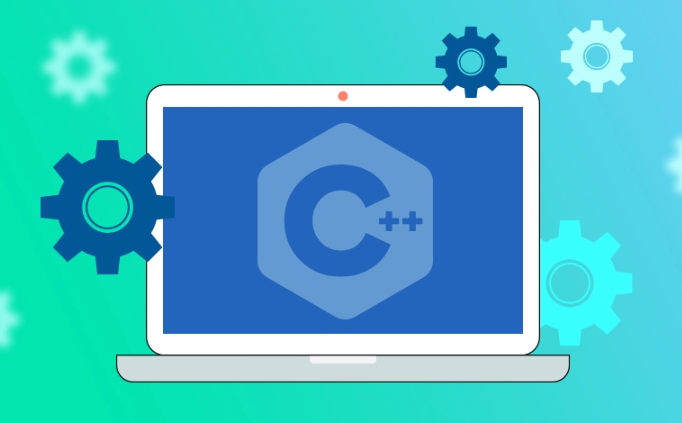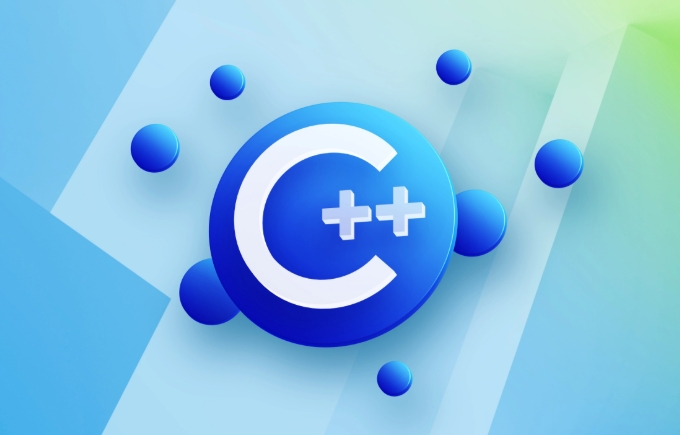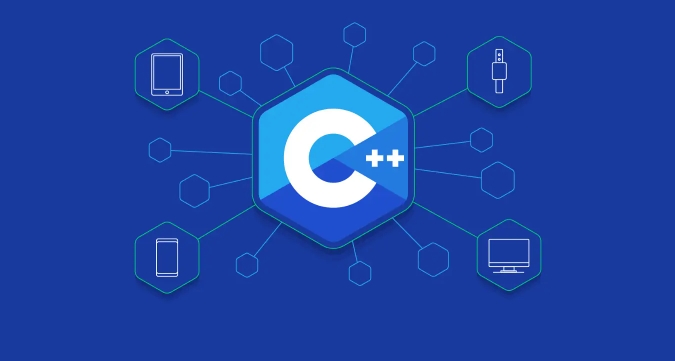To start a simple game engine from scratch, the core modules include window management, rendering loops, input processing and basic scene structure. The first step is to initialize the window library and create an OpenGL context, and set up the graphics environment using GLFW or SDL2; the second step is to implement basic 2D rendering, write a GLSL shader and submit vertex data using VAO/VBO; the third step is to add input processing, control game behavior through key detection, and introduce time difference calculation for frame rate control; the fourth step is to build a simple scene management system, and use GameObject and component methods to uniformly manage the update and drawing of multiple objects, keeping the code clear and easy to expand.

If you want to use C to build a simple game engine from scratch, you don’t need to pursue complexity from the beginning. The core is to understand several key modules: window management, rendering loops, input processing and basic scene structure. Here are some practical steps and suggestions to help you build the easiest and available game engine.

Window creation and graphics context initialization
Before writing game logic, you must first let the program display a window and prepare the environment for drawing. Usually we use GLFW or SDL2 to create windows and handle OpenGL contexts.

The basic steps are as follows:
- Initialize window library (such as
glfwInit()) - Setting up the OpenGL version (for example, using the 3.3 core configuration file)
- Create a window and bind an OpenGL context
- Load OpenGL function pointers using glad or glew
- Enter the main loop, continuously clear the screen and exchange the buffer area
while (!glfwWindowShouldClose(window)) {
glClear(GL_COLOR_BUFFER_BIT);
// The rendering code can be placed here glfwSwapBuffers(window);
glfwPollEvents();
}After this step is completed, you will see a black screen window. Although there is no content yet, it has laid a solid foundation for subsequent development.

Add basic 2D rendering capabilities
Once you have the window, the next step is to let it show something. You can first implement a simple rectangle drawing function, such as "sprite" or "quadrilateral".
Things to do include:
- Write Vertex Shader and Fragment Shader (GLSL)
- Compile link to shader program
- Define vertex data (position, color, texture coordinates, etc.)
- Submit data to GPU using VAO and VBO
- Call the draw command in each frame
For example: A red triangle requires only three vertices and a fragment shader that outputs red. This is the first step to verify that your rendering system is working properly.
Input processing and game loop control
The game engine must respond to the user's actions. You can obtain the keyboard and mouse status through GLFW callback function or polling method.
Common practices:
- Check the key status for each frame (such as
glfwGetKey(window, GLFW_KEY_ESCAPE)) - Map inputs to game behavior, such as pressing space jump, WASD to control movement
- Concentrate input processing into an InputManager class for easy maintenance
You can also add time difference calculations to the main loop to use for frame rate control or physical simulation time step.
The prototype of scene and object management
When you want to display multiple objects at the same time, you need some organizational structure. You don't need to start with the ECS architecture at the beginning, you can start with a simple GameObject Component.
A simple design idea:
- Each GameObject has properties such as position, rotation, and scaling.
- Each object may be attached with a SpriteRenderer or other component
- The main loop traverses all objects and calls their Update() and Render()
This way you can manage different elements together instead of a bunch of global variables.
Basically that's it. Don’t rush to add too many advanced functions. First, run these parts and then gradually expand them. For example, texture loading, collision detection, sound effect support, etc. The key is to keep the code structure clear and not pile up large frameworks from the beginning, as it will easily get stuck.
The above is the detailed content of C tutorial for creating a simple game engine. For more information, please follow other related articles on the PHP Chinese website!

Hot AI Tools

Undress AI Tool
Undress images for free

Undresser.AI Undress
AI-powered app for creating realistic nude photos

AI Clothes Remover
Online AI tool for removing clothes from photos.

Clothoff.io
AI clothes remover

Video Face Swap
Swap faces in any video effortlessly with our completely free AI face swap tool!

Hot Article

Hot Tools

Notepad++7.3.1
Easy-to-use and free code editor

SublimeText3 Chinese version
Chinese version, very easy to use

Zend Studio 13.0.1
Powerful PHP integrated development environment

Dreamweaver CS6
Visual web development tools

SublimeText3 Mac version
God-level code editing software (SublimeText3)

Hot Topics
 C Polymorphism : is function overloading a kind of polymorphism?
Jun 20, 2025 am 12:05 AM
C Polymorphism : is function overloading a kind of polymorphism?
Jun 20, 2025 am 12:05 AM
Yes, function overloading is a polymorphic form in C, specifically compile-time polymorphism. 1. Function overload allows multiple functions with the same name but different parameter lists. 2. The compiler decides which function to call at compile time based on the provided parameters. 3. Unlike runtime polymorphism, function overloading has no extra overhead at runtime, and is simple to implement but less flexible.
 What Are the Different Kinds of Polymorphism in C ? Explained
Jun 20, 2025 am 12:08 AM
What Are the Different Kinds of Polymorphism in C ? Explained
Jun 20, 2025 am 12:08 AM
C has two main polymorphic types: compile-time polymorphism and run-time polymorphism. 1. Compilation-time polymorphism is implemented through function overloading and templates, providing high efficiency but may lead to code bloating. 2. Runtime polymorphism is implemented through virtual functions and inheritance, providing flexibility but performance overhead.
 C : Is Polymorphism really useful?
Jun 20, 2025 am 12:01 AM
C : Is Polymorphism really useful?
Jun 20, 2025 am 12:01 AM
Yes, polymorphisms in C are very useful. 1) It provides flexibility to allow easy addition of new types; 2) promotes code reuse and reduces duplication; 3) simplifies maintenance, making the code easier to expand and adapt to changes. Despite performance and memory management challenges, its advantages are particularly significant in complex systems.
 C Destructors: Common Errors
Jun 20, 2025 am 12:12 AM
C Destructors: Common Errors
Jun 20, 2025 am 12:12 AM
C destructorscanleadtoseveralcommonerrors.Toavoidthem:1)Preventdoubledeletionbysettingpointerstonullptrorusingsmartpointers.2)Handleexceptionsindestructorsbycatchingandloggingthem.3)Usevirtualdestructorsinbaseclassesforproperpolymorphicdestruction.4
 Polymorphism in C : A Comprehensive Guide with Examples
Jun 21, 2025 am 12:11 AM
Polymorphism in C : A Comprehensive Guide with Examples
Jun 21, 2025 am 12:11 AM
Polymorphisms in C are divided into runtime polymorphisms and compile-time polymorphisms. 1. Runtime polymorphism is implemented through virtual functions, allowing the correct method to be called dynamically at runtime. 2. Compilation-time polymorphism is implemented through function overloading and templates, providing higher performance and flexibility.
 C tutorial for people who know Python
Jul 01, 2025 am 01:11 AM
C tutorial for people who know Python
Jul 01, 2025 am 01:11 AM
People who study Python transfer to C The most direct confusion is: Why can't you write like Python? Because C, although the syntax is more complex, provides underlying control capabilities and performance advantages. 1. In terms of syntax structure, C uses curly braces {} instead of indentation to organize code blocks, and variable types must be explicitly declared; 2. In terms of type system and memory management, C does not have an automatic garbage collection mechanism, and needs to manually manage memory and pay attention to releasing resources. RAII technology can assist resource management; 3. In functions and class definitions, C needs to explicitly access modifiers, constructors and destructors, and supports advanced functions such as operator overloading; 4. In terms of standard libraries, STL provides powerful containers and algorithms, but needs to adapt to generic programming ideas; 5
 What Are the Various Forms of Polymorphism in C ?
Jun 20, 2025 am 12:21 AM
What Are the Various Forms of Polymorphism in C ?
Jun 20, 2025 am 12:21 AM
C polymorphismincludescompile-time,runtime,andtemplatepolymorphism.1)Compile-timepolymorphismusesfunctionandoperatoroverloadingforefficiency.2)Runtimepolymorphismemploysvirtualfunctionsforflexibility.3)Templatepolymorphismenablesgenericprogrammingfo
 C Polymorphism: Coding Style
Jun 19, 2025 am 12:25 AM
C Polymorphism: Coding Style
Jun 19, 2025 am 12:25 AM
C polymorphismisuniqueduetoitscombinationofcompile-timeandruntimepolymorphism,allowingforbothefficiencyandflexibility.Toharnessitspowerstylishly:1)Usesmartpointerslikestd::unique_ptrformemorymanagement,2)Ensurebaseclasseshavevirtualdestructors,3)Emp






